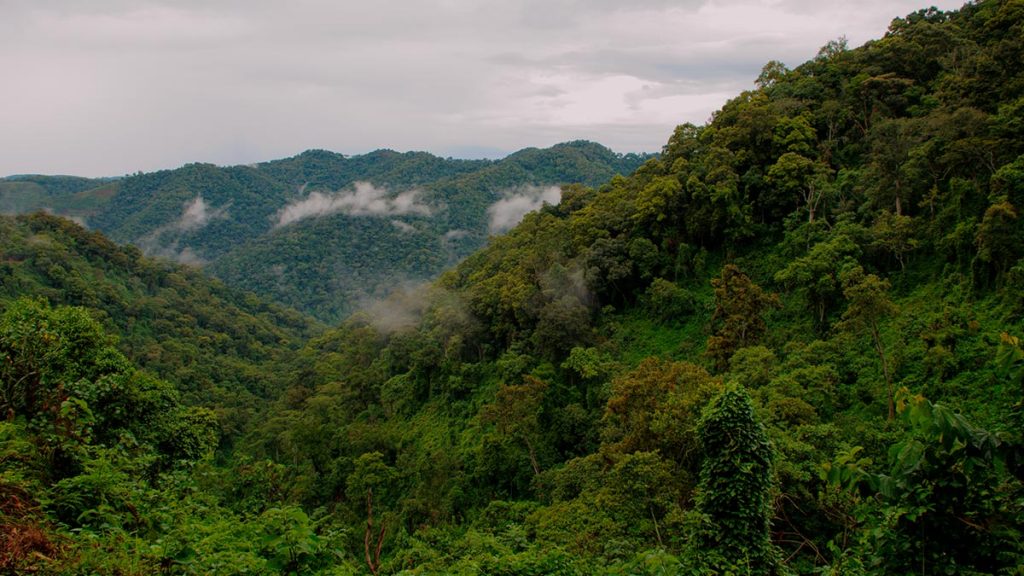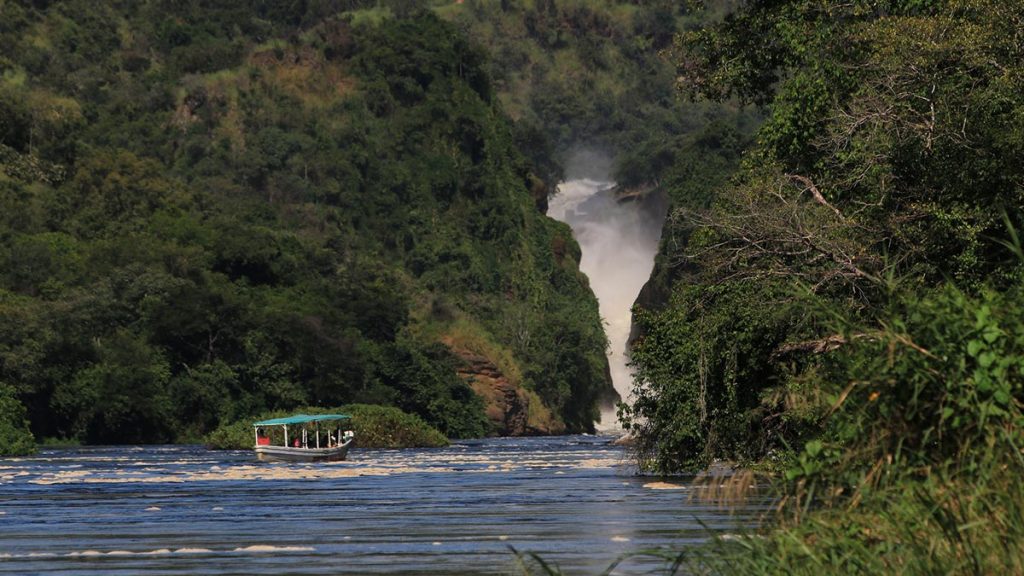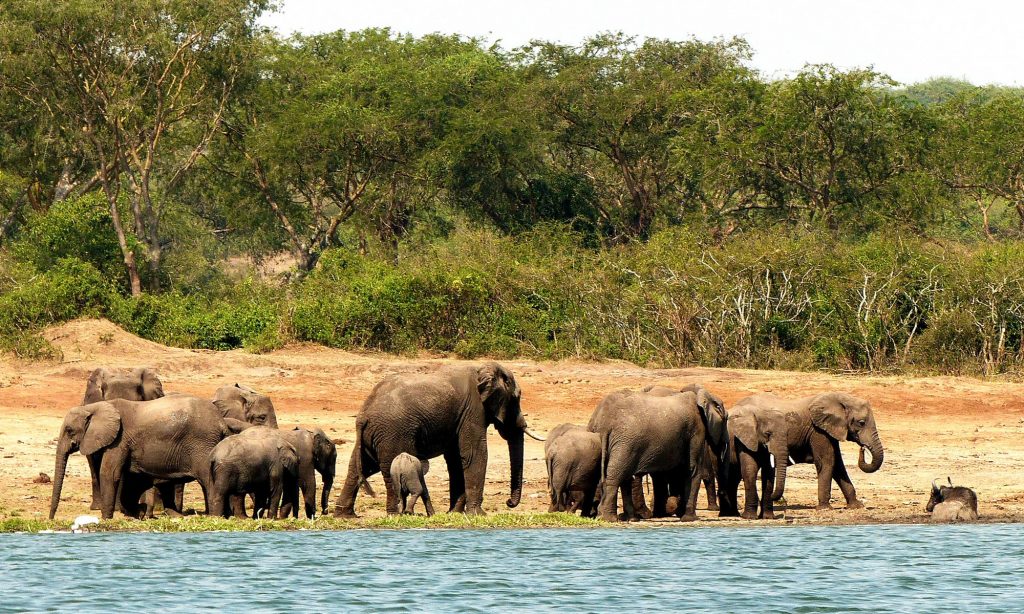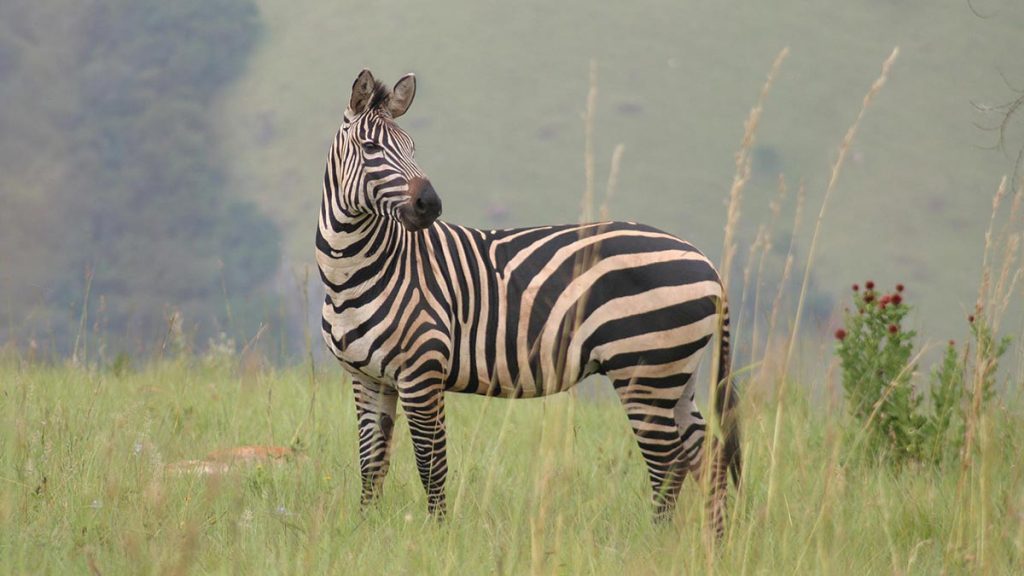Many travel to Uganda to catch sight of the mystical, mountain gorillas living in the dense forests.
Uganda’s attractions don’t stop there. The hippo-filled rivers, abundant birdlife, serene lakes and villages filled with enthusiastic locals consistently capture the attention, imagination and hearts of travellers worldwide.
Here are Uganda’s top national parks:

Bwindi Impenetrable Forest National Park
Bwindi Impenetrable National Park lies in southwestern Uganda on the edge of the Rift Valley. Its mist-covered hillsides are blanketed by one of Uganda’s oldest and most biologically diverse rainforests, which dates back over 25,000 years and contains almost 400 species of plants. More famously, this “impenetrable forest” also protects an estimated 320 mountain gorillas – roughly half of the world’s population, including several habituated groups, which can be tracked.

Kibale Forest National Park
Kibale Forest National Park contains one of the loveliest and most varied tracts of tropical forest in Uganda. Forest cover, interspersed with patches of grassland and swamp, dominates the northern and central parts of the park on an elevated plateau. The park is home to a total of 70 mammal species, most famously 13 species of primate including the chimpanzee. It also contains over 375 species of birds. Kibale adjoins Queen Elizabeth National park to the south to create a 180km-long corridor for wildlife between Ishasha, the remote southern sector of Queen Elizabeth National Park, and Sebitoli in the north of Kibale National Park.

Murchison Falls National Park
First gazetted as a game reserve in 1926, Murchison Falls National Park is Uganda’s largest and oldest conservation area, hosting 76 species of mammals and 451 birds. This is the largest National Park in Uganda – covering 3,480 sq km – and one of the most spectacular in Africa. The park is bisected by the Victoria Nile, which plunges 45m over the remnant rift valley wall, creating the dramatic Murchison Falls, the centerpiece of the park and the final event in an 80km stretch of rapids. The mighty cascade drains the last of the river’s energy, transforming it into a broad, placid stream that flows quietly across the rift valley floor into Lake Albert. A cruise upstream the Nile to the Falls is an unforgettable experience. This stretch of river provides one of Uganda’s most remarkable wildlife spectacles. On the banks, prolific wildlife including elephant, crocodile, hippopotamus, lion, giraffe, buffalo, and countless antelopes and birds can be observed.
Kidepo Valley National Park
Kidepo is Uganda’s most isolated national park, but the few who make the long journey north through the wild frontier region of Karamoja would agree that it is also the most magnificent, for Kidepo ranks among Africa’s finest wildernesses. From Apoka in the heart of the park, a savannah landscape extends far beyond the gazetted area, towards horizons outlined by distant mountain ranges. During the dry season, the only permanent water in the park is found in wetlands and remnant pools in the broad Narus Valley near Apoka. These seasonal oases, combined with the open, savannah terrain, make the Narus Valley the park’s prime game viewing location.

Queen Elizabeth National Park
Queen Elizabeth National Park is understandably Uganda’s most popular tourist destination. The park’s diverse ecosystems, which include sprawling savanna, shady, humid forests, sparkling lakes and fertile wetlands, make it the ideal habitat for classic big game, ten primate species including chimpanzees and over 600 species of birds.
Set against the backdrop of the jagged Rwenzori Mountains, the park’s magnificent vistas include dozens of enormous craters carved dramatically into rolling green hills, panoramic views of the Kazinga Channel with its banks lined with hippos, buffalo and elephants, and the endless Ishasha plains, whose fig trees hide lions ready to pounce on herds of unsuspecting Uganda kob. A favourite way to view the game is by launch trip on the Kazinga Channel between Lakes George and Edward.
Lake Mburo National Park
Situated between the towns of Masaka and Mbarara, Lake Mburo National Park is a compact gem, located conveniently close to the highway that connects Kampala to the parks of western Uganda. It is the smallest of Uganda’s savannah national parks and underlain by ancient Precambrian metamorphic rocks which date back more than 500 million years. It is home to 350 bird species including the marabou stock and the crowned crane as well as zebra, impala, eland, buffalo, oribi, defessa waterbuck, leopard, hippo, topi, crocodile and reedbuck.
Mount Elgon National Park
This is an extinct volcano located on Uganda’s eastern border. Mount Elgon National Park boasts numerous interesting features including gorges, ancient caves, waterfalls at Sipi and hot springs. Birdlife is abundant on the mountain and various wildlife varieties may also be encountered.

Rwenzori Mountains National Park
The Rwenzori Mountains – the fabled “Mountains of the Moon” – lie in western Uganda along the Uganda-Congo border. The mist-shrouded peaks of the Mountains of the Moon provide a stunning backdrop to this magnificent park, located on Uganda’s western border. The equatorial snow peaks include the third highest point in Africa, while the lower slopes are blanketed in moorland, bamboo and rich, moist montane forest. Huge tree-heathers and colourful mosses are draped across the mountainside with giant lobelias and “everlasting flowers”, creating an enchanting, fairytale scene.The Rwenzoris are a world-class hiking and mountaineering destination. A nine- to twelve-day trek will get skilled climbers to the summit of Margherita – the highest peak – though shorter, non-technical treks are possible to scale the surrounding peaks.
Semuliki National Park
Semuliki National Park sprawls across the floor of the Semuliki Valley on the remote, western side of the Rwenzori. The park is dominated by the easternmost extension of the great Ituri Forest of the Congo Basin. This is one of Africa’s most ancient and bio-diverse forests; one of the few to survive the last ice age, 12-18,000 years ago.
Mgahinga Gorilla National Park
Mgahinga Gorilla National Park is yet another haven for the persecuted mountain gorilla. Located on the slopes of the Virunga Mountains in the extreme southwest corner of Uganda, the park has been set aside to provide a secure habitat for the gorillas. Mgahinga Gorilla National Park sits high in the clouds, at an altitude of between 2,227m and 4,127m. As its name suggests, it was created to protect the rare mountain gorillas that inhabit its dense forests, and it is also an important habitat for the endangered golden monkey. As well as being important for wildlife, the park also has a huge cultural significance, in particular for the indigenous Batwa pygmies. This tribe of hunter-gatherers was the forest’s “first people”, and their ancient knowledge of its secrets remains unrivalled.

